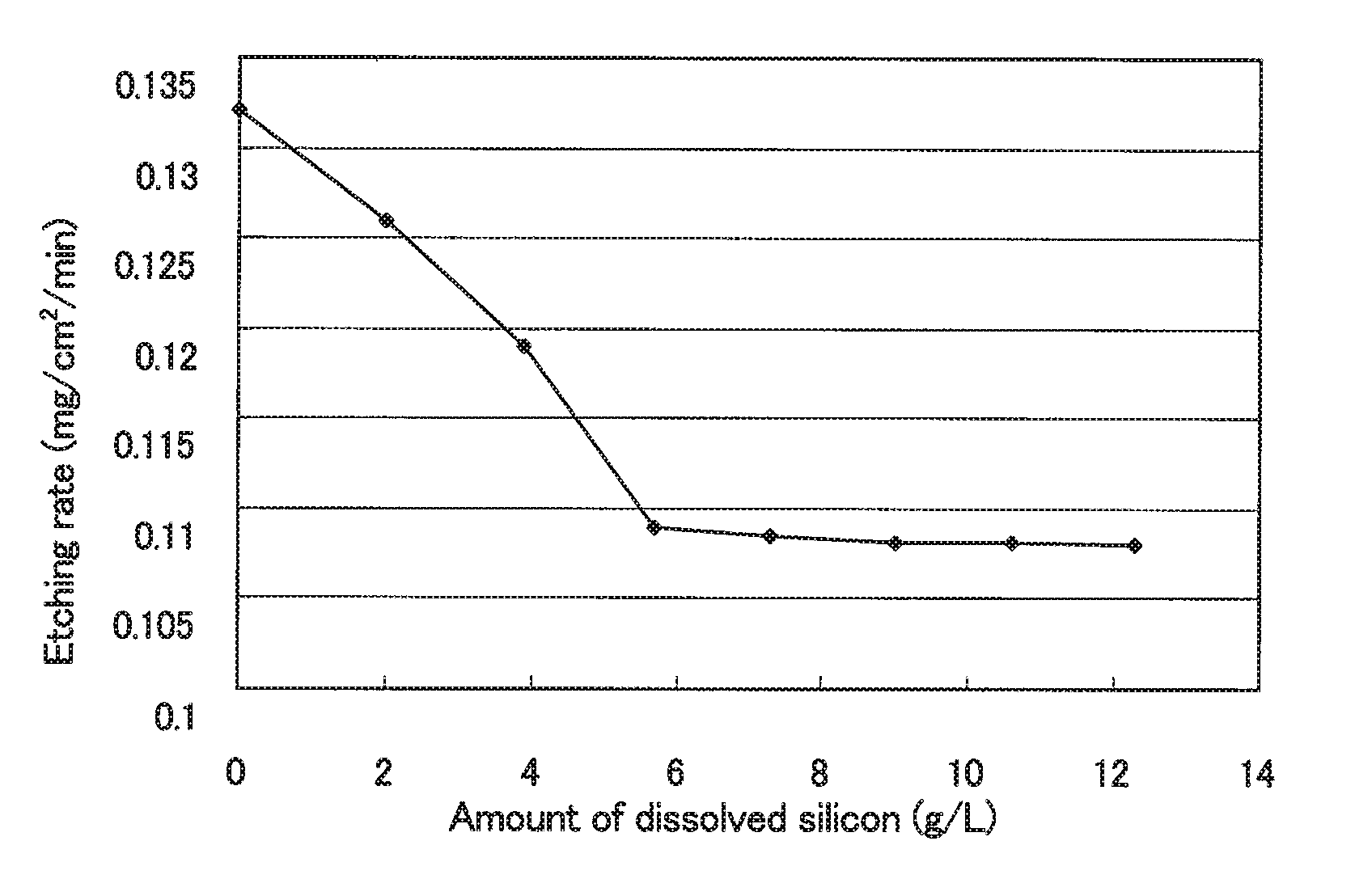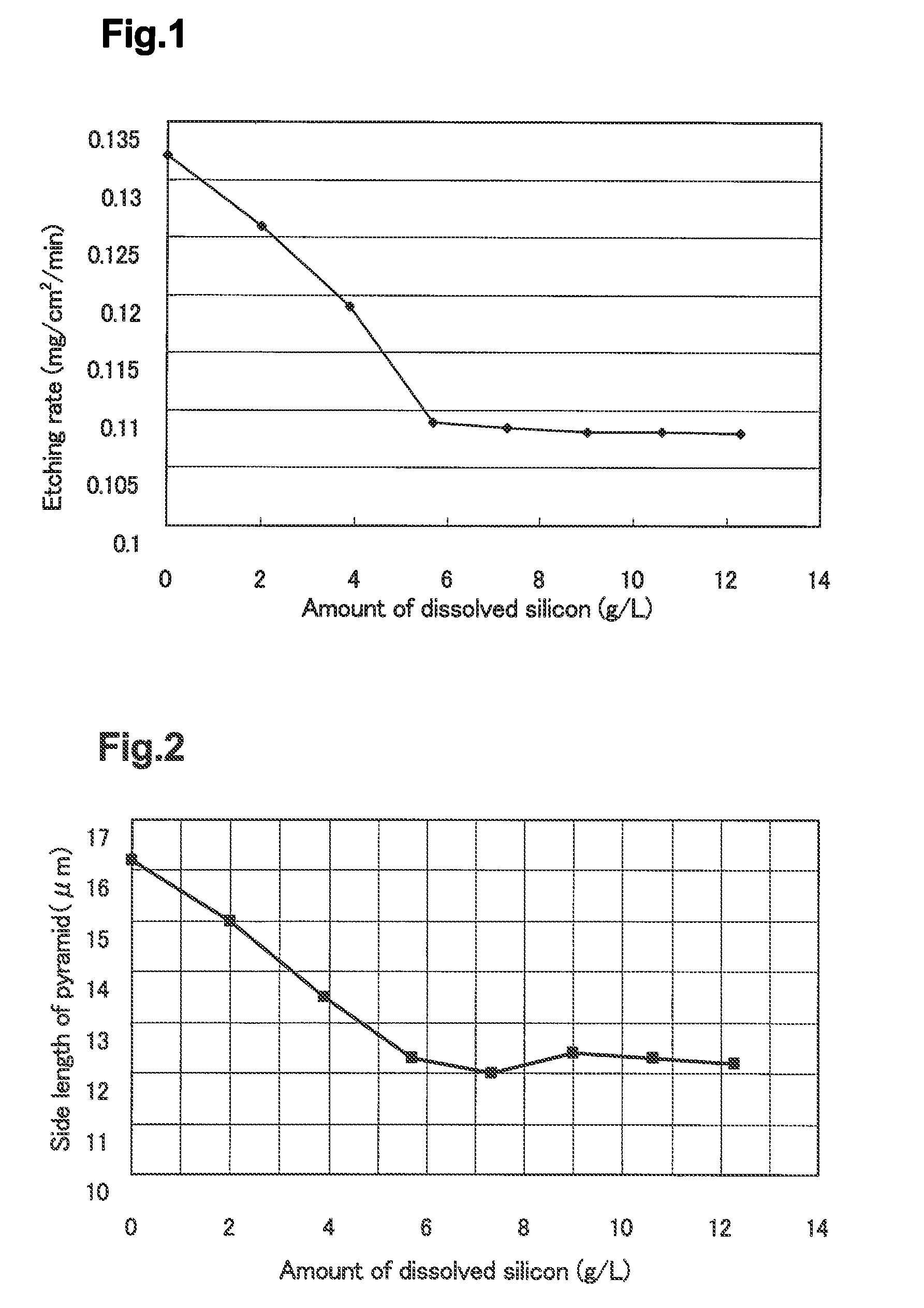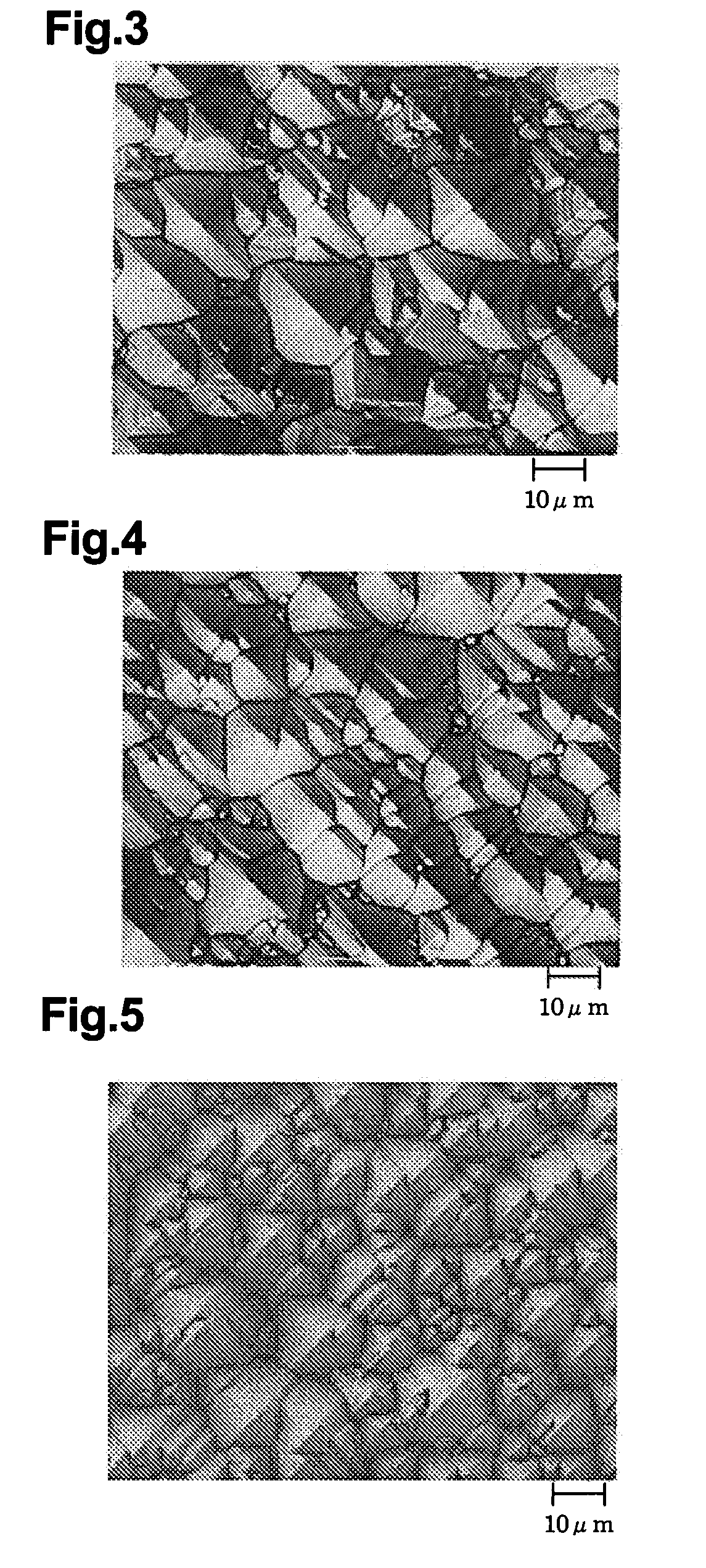Process for producing semiconductor substrate, semiconductor substrate for solar application and etching solution
a technology of semiconductor substrate and etching solution, which is applied in the direction of semiconductor devices, electrical devices, chemistry apparatus and processes, etc., can solve the problems of difficult to form uniform fine unevenness in a plane, waste water treatment, safety, etc., and achieve finely uniform uneven structure and excellent photoelectric conversion efficiency. , the effect of safe production
- Summary
- Abstract
- Description
- Claims
- Application Information
AI Technical Summary
Benefits of technology
Problems solved by technology
Method used
Image
Examples
experimental example 1
[0051]Using an etching solution, in which 50 g / L (0.43 mol / L) of hexanoic acid and a predetermined amount of potassium silicate (the amount of dissolved silicon; 0, 2.0, 3.9, 5.7, 7.3, 9.0, 10.6 or 12.3 g / L) were added to a 25% by weight KOH aqueous solution, as an etching solution, a single crystal silicon substrate (a square plate with a side of 126 mm and a thickness of 200 μm) having a (100) plane on a surface thereof was soaked at 90° C. for 30 minutes. Then, a reduced amount of the etched silicon substrate was measured to calculate an etching rate. In addition, the surface of the etched substrate was observed in a scanning electron microscope to measure a side length of a pyramid. Herein, the side length of the pyramid refers to an average value of one side length (a maximum side length of a base) measured of 10 uneven structures successively selected in a decreasing order of the shape size in the uneven structure per unit area of 265 μm×200 μm.
[0052]FIG. 1 is a graph showing ...
experimental example 2
[0054]As a result of conducting an experiment in the same way as in Experimental Example 1 except that the concentration of the KOH aqueous solution was changed to 12.5% by weight to calculate an etching rate, the same result as Experimental Example 1 was obtained.
[0055]Further, in case of the amount of the dissolved silicon being 5.7 g / L, the etched substrate surface was observed by a scanning electron microscope to measure a side length of a pyramid, and the side length of the pyramid was 10 μm. The obtained scanning electron micrograph (a magnification of 500) is shown in FIG. 7.
experimental example 3
[0056]An experiment was conducted in the same way as in Experimental Example 1 except that the etching solution in which 50 g / L (0.35 mol / L) of octanoic acid was added in place of hexanoic acid to calculate an etching rate. The result is shown in FIG. 8. As shown in FIG. 8, by dissolving silicon into an alkaline solution in which octanoic acid was added, a stable etching rate was obtained.
[0057]Further, in case of the amount of the silicon dissolution being 5.7 g / L, the etched substrate surface was observed by a scanning electron microscope to measure a side length of a pyramid, the side length of the pyramid was 15 μm. The obtained scanning electron micrograph (a magnification of 500) is shown in FIG. 9.
PUM
| Property | Measurement | Unit |
|---|---|---|
| side length | aaaaa | aaaaa |
| carbon number | aaaaa | aaaaa |
| size | aaaaa | aaaaa |
Abstract
Description
Claims
Application Information
 Login to View More
Login to View More - R&D
- Intellectual Property
- Life Sciences
- Materials
- Tech Scout
- Unparalleled Data Quality
- Higher Quality Content
- 60% Fewer Hallucinations
Browse by: Latest US Patents, China's latest patents, Technical Efficacy Thesaurus, Application Domain, Technology Topic, Popular Technical Reports.
© 2025 PatSnap. All rights reserved.Legal|Privacy policy|Modern Slavery Act Transparency Statement|Sitemap|About US| Contact US: help@patsnap.com



